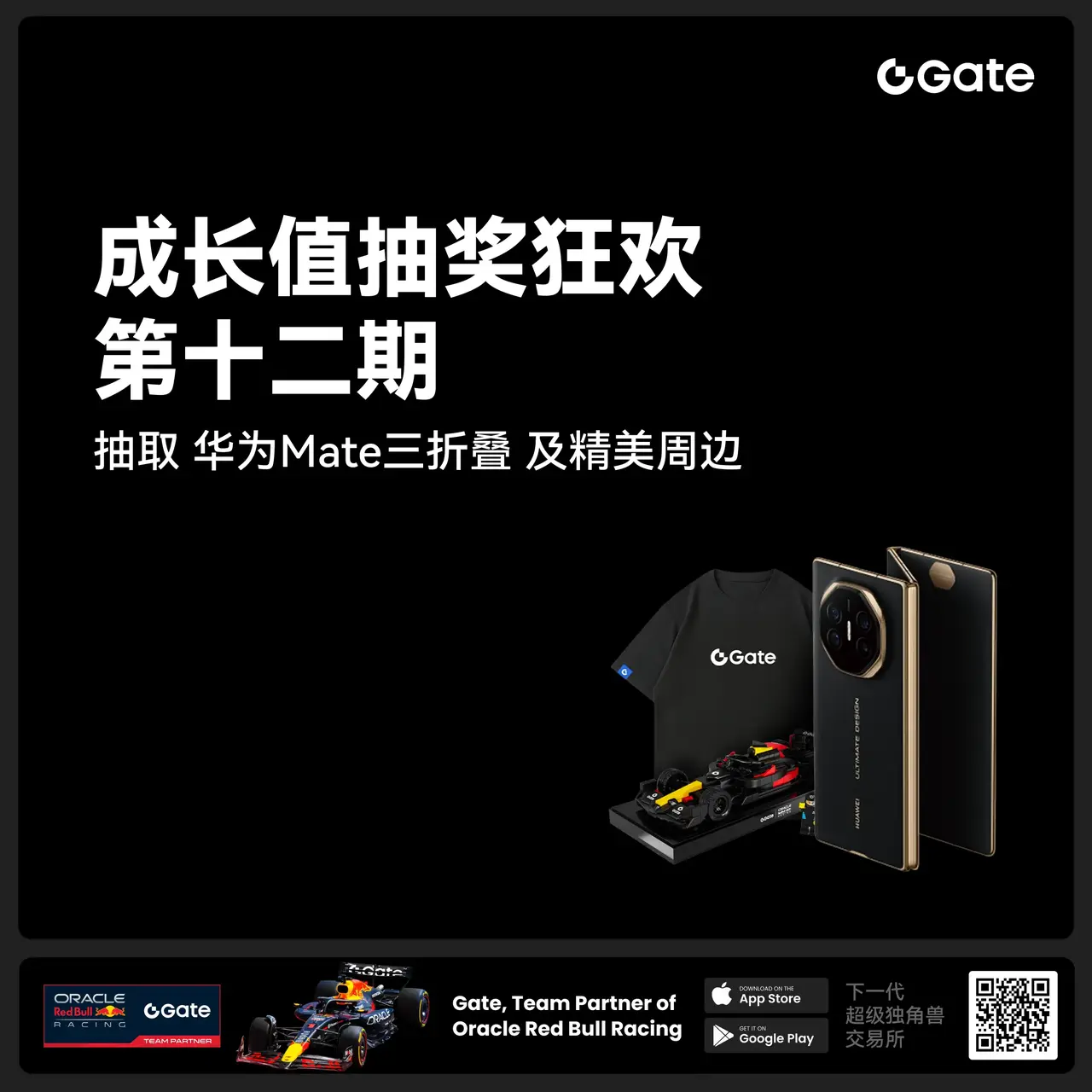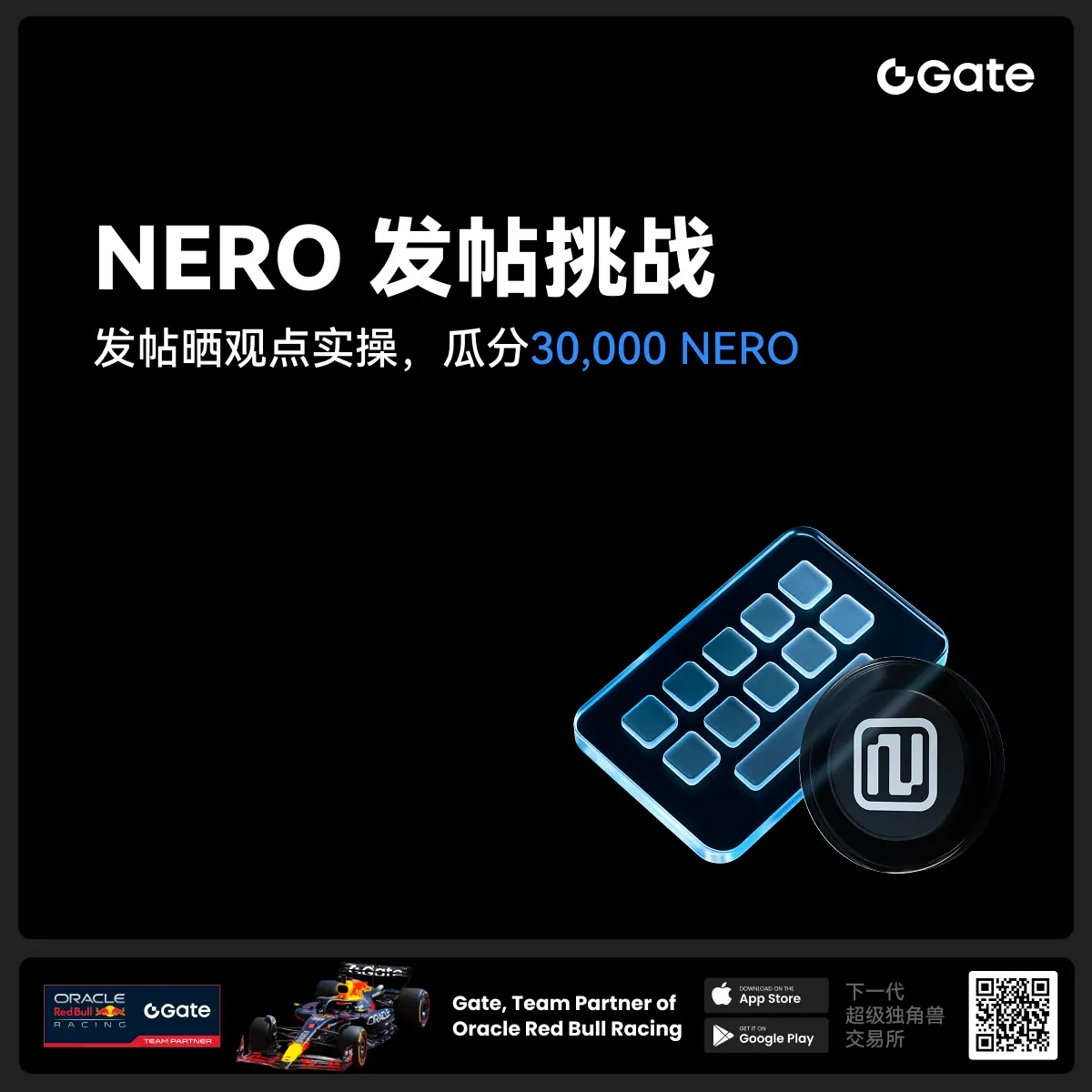- 話題1/3
59k 熱度
43k 熱度
56k 熱度
9k 熱度
24k 熱度
- 置頂
- 🎉 #CandyDrop合约挑战# 正式開啓!參與即可瓜分 6 BTC 豪華獎池!
📢 在 Gate 廣場帶話題發布你的合約體驗
🎁 優質貼文用戶瓜分$500 合約體驗金券,20位名額等你上榜!
📅 活動時間:2025 年 8 月 1 日 15:00 - 8 月 15 日 19:00 (UTC+8)
👉 活動連結:https://www.gate.com/candy-drop/detail/BTC-98
敢合約,敢盈利
- 🎉 攢成長值,抽華爲Mate三折疊!廣場第 1️⃣ 2️⃣ 期夏季成長值抽獎大狂歡開啓!
總獎池超 $10,000+,華爲Mate三折疊手機、F1紅牛賽車模型、Gate限量週邊、熱門代幣等你來抽!
立即抽獎 👉 https://www.gate.com/activities/pointprize?now_period=12
如何快速賺成長值?
1️⃣ 進入【廣場】,點擊頭像旁標識進入【社區中心】
2️⃣ 完成發帖、評論、點讚、發言等日常任務,成長值拿不停
100%有獎,抽到賺到,大獎等你抱走,趕緊試試手氣!
截止於 8月9日 24:00 (UTC+8)
詳情: https://www.gate.com/announcements/article/46384
#成长值抽奖12期开启#
- 📢 Gate廣場 #NERO发帖挑战# 秀觀點贏大獎活動火熱開啓!
Gate NERO生態周來襲!發帖秀出NERO項目洞察和活動實用攻略,瓜分30,000NERO!
💰️ 15位優質發帖用戶 * 2,000枚NERO每人
如何參與:
1️⃣ 調研NERO項目
對NERO的基本面、社區治理、發展目標、代幣經濟模型等方面進行研究,分享你對項目的深度研究。
2️⃣ 參與並分享真實體驗
參與NERO生態周相關活動,並曬出你的參與截圖、收益圖或實用教程。可以是收益展示、簡明易懂的新手攻略、小竅門,也可以是行情點位分析,內容詳實優先。
3️⃣ 鼓勵帶新互動
如果你的帖子吸引到他人參與活動,或者有好友評論“已參與/已交易”,將大幅提升你的獲獎概率!
NERO熱門活動(帖文需附以下活動連結):
NERO Chain (NERO) 生態周:Gate 已上線 NERO 現貨交易,爲回饋平台用戶,HODLer Airdrop、Launchpool、CandyDrop、餘幣寶已上線 NERO,邀您體驗。參與攻略見公告:https://www.gate.com/announcements/article/46284
高質量帖子Tips:
教程越詳細、圖片越直觀、互動量越高,獲獎幾率越大!
市場見解獨到、真實參與經歷、有帶新互動者,評選將優先考慮。
帖子需原創,字數不少於250字,且需獲得至少3條有效互動
- 🎉 親愛的廣場小夥伴們,福利不停,精彩不斷!目前廣場上這些熱門發帖贏獎活動火熱進行中,發帖越多,獎勵越多,快來GET你的專屬好禮吧!🚀
1️⃣ #GateLaunchpad上线IKA# |IKA認購體驗
在Gate廣場帶話題曬出你的IKA Launchpad認購體驗,4位幸運分享者講瓜分$200分享獎池!
詳情 👉️ https://www.gate.com/post/status/12566958
2️⃣ #ETH冲击4800# |行情分析預測
大膽發帖預測ETH走勢,展示你的市場洞察力!10位幸運用戶將平分0.1 ETH 獎勵!
詳情 👉️ https://www.gate.com/post/status/12322403
3️⃣ #创作者活动第二期# |ZKWASM話題
在廣場或推特發布與 ZKWASM 或其交易活動相關的原創內容,瓜分4,000枚ZKWASM!
詳情 👉️ https://www.gate.com/post/status/12525794
4️⃣ #Gate广场征文活动第二期# |ERA話題
談談你對ERA的觀點/體驗,參與並推廣活動,700 ERA大獎等你贏!
詳情 👉️ https://www.gate.com/post/status/12361653
5️⃣ #MBG任务挑战# |MBG話題
分享你對MBG的洞察,積極參與和推廣MBG活動,20位小 - 🎉Gate 2025 上半年社區盛典:內容達人評選投票火熱進行中 🎉
🏆 誰將成爲前十位 #Gate广场# 內容達人?
投票現已開啓,選出你的心頭好
🎁贏取 iPhone 16 Pro Max、限量週邊等好禮!
📅投票截止:8 月 15 日 10:00(UTC+8)
立即投票: https://www.gate.com/activities/community-vote
活動詳情: https://www.gate.com/announcements/article/45974
AI算力平台商業模式解析:連結閒置顯卡與AI需求
AI算力平台的商業模式探討:以IO和ATH爲例
近期,兩個AI概念項目相繼進行了代幣發行,引發了業內對AI算力平台商業模式的廣泛討論。這種模式本質上是一個經典的平台型商業模式。
一方面是AI初創企業和遊戲渲染公司,他們需要大量算力資源;另一方面是擁有閒置高性能顯卡的個人或機構。如果有一個平台能夠將這兩方需求對接起來,就形成了一個典型的平台商業模型。
這種模式對雙方都有利:AI公司可以以較低成本獲得所需算力,而顯卡所有者則能從閒置資源中獲得收益。正是看到了這一市場機會,一些平台應運而生,旨在連接閒置顯卡資源與AI公司需求。
這種模式之所以受歡迎,主要基於以下幾個原因:
然而,這種平台模式面臨一個典型的"先有雞還是先有蛋"的問題:AI公司需要平台上有足夠的算力資源,而顯卡所有者則期望有足夠的訂單。爲了打破這個循環,一些平台引入了加密貨幣機制。
一個平台選擇了"先有雞"的策略,通過代幣補貼吸引大量顯卡接入。另一個平台則採取了不同的方法,推出了虛擬和實體礦機產品,以此來維護和擴大用戶基礎。這種做法有效地增加了用戶的沉沒成本,提高了用戶黏性。
在商業模式上,這些平台通常允許使用法幣或穩定幣支付,同時也提供使用平台代幣支付的選項,並給予一定折扣。這種做法既不強制用戶使用平台代幣,又爲代幣賦予了實際功能,有利於代幣的分散持有。
在生態建設方面,不同平台採取了不同的策略。有的平台引入了檢查員角色,負責監控顯卡的工作狀態和訂單處理情況,並通過這項工作獲得代幣獎勵。這種做法不僅增加了平台的可靠性,也爲早期參與者提供了獲利機會。
值得注意的是,盡管這些平台在某種程度上存在競爭關係,但由於都處理標準化的顯卡資源,它們之間也存在合作空間。一些平台甚至進行了代幣互換,展現了行業內的合作精神。
總的來說,AI算力平台的出現爲AI初創企業和顯卡所有者提供了新的機遇,也爲整個AI行業的發展注入了新的動力。隨着這一模式的不斷完善和發展,我們可以期待看到更多創新和突破。